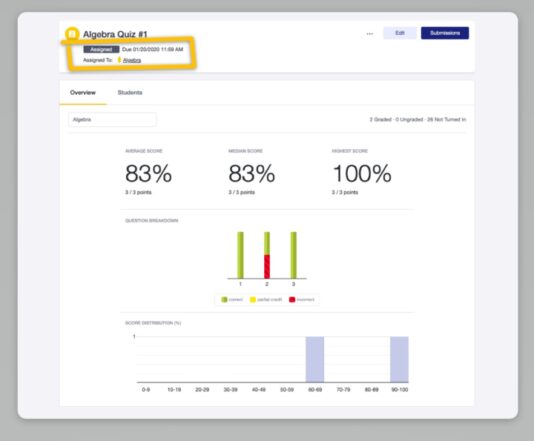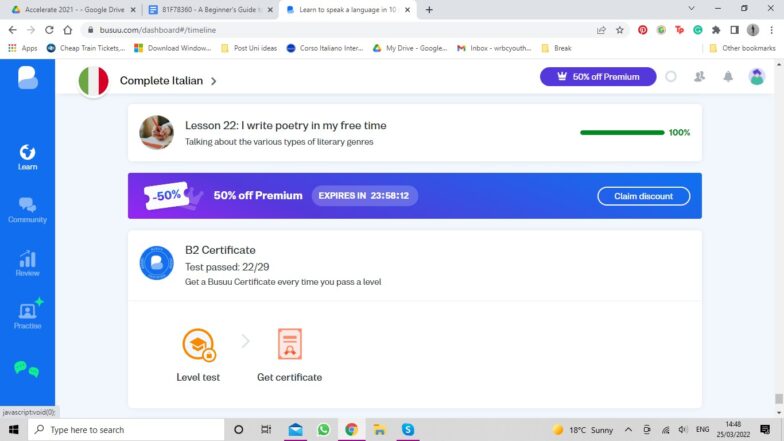What is Online Course Gamification? (+ Benefits & Features)
Jenna Bunnell
Encouraging students to engage fully in your courses can be difficult for online course creators. It’s one thing for students to sign up for your course. But motivating them to complete the course is another matter entirely.
Online course gamification is a powerful means for encouraging students to continue making progress with your course. It makes the process of learning rewarding and engaging so students are more motivated to keep up with their lessons.
In this post, we’ll explain what online course gamification is, the benefits it offers your students, and popular gamification features you can include in your courses.
What Is Online Course Gamification?
Online course gamification aims to encourage students to be active participants in your course by making learning more enjoyable and rewarding.
The idea isn’t to turn learning into a game but to use features from games to incentivize students so that they are more likely to stick with your course. Gamification can be a highly effective way to engage students and often results in higher rates of online course engagement and retention.
Online course gamification has been used successfully across many industries, including retail, education, healthcare, Line2 competitors, and tech businesses. This goes to show that gamification can work for your online course, no matter what industry you’re in.
Benefits of Online Course Gamification
There are many features of online course gamification that work to engage and benefit your clients and students. Including gamification features in your courses can help prompt students to act and continue making progress in your course.
Here are some of the ways that gamification helps to engage your students:
Provides Motivation
Gamification uses a variety of its features to motivate users to take part in online courses. This could be to outdo other students taking the course, improve on individual scores, or receive the rewards on offer. By providing an incentive to users to complete courses, there’s more reason for students to tackle the lessons and not put them off, particularly with repetitive tasks or training. Motivation helps users to focus for longer, which is essential for sustaining interest in online courses.
Gives Autonomy Over Skill Learning
The speed at which you go through online course content is often dictated by course instructors. However, gamification gives users the flexibility to spend more time on sections or return to them later. In addition, students can access online courses via a Bluetooth phone headset or a mobile device. This gives users a great deal of autonomy and ownership over their learning.
Helps Students Set Goals
Everyone needs something to strive for, and gamification of your online courses provides goals and targets for users. These can be larger goals, such as completing a course or achieving a certification. Alternatively, gamification can provide smaller goals such as completing a stage or getting a high score in an activity. Targets help students to focus on their goals and provide them with a sense of achievement when they reach them.
Provides Valuable Feedback
We know that providing effective feedback can improve our students’ learning outcomes, however finding the time to do this can be tricky. Online course gamification means that users receive constant feedback on a range of their skills. This is shown through leaderboards or points ratings, showing which sections or activities users could work on and which they are succeeding in. Feedback is then used to inform which areas they revisit or continue to practice.

Image Source
Online Course Gamification Features
What sets gamified courses apart from other online courses is the features they include that encourage and support students. These features help clients track where they are in the course, build a sense of competition, and recognize the effort clients put into their courses.
Some gamification features you may want to include in your online course might be:
1. Progress Bar and Levels
When completing an online training, it can be helpful to users to know how far along they are. Particularly for large portions of content, knowing how much is left can either motivate users to continue or suggest good points to take a break, helping them to become better learners. A progress bar shows the percentage or number of tasks completed. Likewise, including different levels for each section can break up the content and make it more manageable.
2. Points
Acting as a symbol of how much training or experience a user has in a particular area, offering points helps to identify users with more advanced knowledge or skills. This can be useful to others on the online course seeking help or support. It also recognizes the effort users put into their training, as well as indicating the importance of specific activities or tasks on the course.
3. Prizes and Bonuses
One way to boost morale and reward the work of your students in online courses is through rewards or bonuses. These are often given to users who have completed a certain number of lessons, in exchange for points, or at specific milestones. Prizes and bonuses boost course engagement by offering users something they want. This could be discounts on the products you sell, experiences from your affiliates, or added course benefits.
4. Achievement Recognition
Through badges and awards within the course, users get recognition for the skills they build and their work. Whether learning to use Amazon Pinpoint and other marketing software or developing personal skills like networking, making achievements shareable allows users to celebrate with other students in the course, as well as friends outside the course. This motivates your students to continue their course, using their skills to achieve their learning outcomes.

5. Leaderboards
Comparison with others in the course can build competition, driving students to try and outdo each other. Leaderboards provide this, showing who has made the most progress and earned the most points. This can also encourage teamwork and student collaboration when displaying the highest-scoring groups. A leaderboard gives other users something to aim at, encouraging student retention and engagement with the course.
6. Student Certification
For educational courses or qualifications, certification at the end of the course verifies that the student possesses the knowledge and expertise in a certain subject matter. These certificates can then be used by the student in other scenarios, validating their understanding and proving their commitment to the course. Certification makes the end achievement of the course more tangible to students too, having something to aim at to help them reach their learning goals.
Want to Give Online Course Gamification a Try?
Including gamification in online courses is a powerful way to sustain the interest of students so they actually complete the course. These gamification practices engage students in your courses, encouraging them to learn and making them likely to try your other courses too.
If you’re interested in transforming your online courses with gamification, remember that the features you include should be shaped around the needs and preferences of your students. You should also take into account any accessibility needs and time restrictions they may have.
Done correctly, gamification can make your course a more enjoyable, rewarding, and fun experience that motivates your students to put forth their best effort and achieve their goals.
So why not give online course gamification a try?